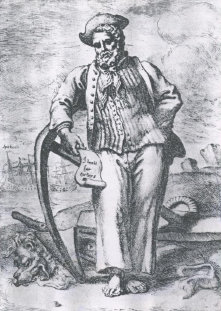

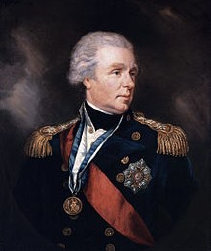

Contact
The Naked Yowie Project
Large Hairy Wild Man, 1800
From a London Paper--August 30.
There is now, in the River an astonishing large Hairy Wild Man, caught four hundred miles from the
Cape of Good Hope, brought over in the Rambler, South Sea Whaler; he is of astonishing muscular strength, a specimen of which had
nearly proved fatal to one of the Custome-house Officers, who inadvertently went too near him; he seized hold of the man, twirled
him about two or three times with the greatest velocity, and then threw him over the side. Luckily the man escaped with a horrid fright
and a sound ducking.
Also reported in:
Hampshire Chronicle (England), 1 September
1800
Exeter Flying Post (England), 4 September 1800
Stamford Mercury (England), 5 September 1800
Newcastle Courant (England), 6 September
1800
Glasgow Advertiser (Scotland), 7 September 1800
Reading Mercury (England), 8 September 1800
Sherborne Mercury (England), 8 September
1800
The above article also appears on the online data base of the
BFRO (Bigfoot Field Researchers Organization) presumably as an example
of the historic international Bigfoot. No further information is provided.
Historical Fact Checking
HMS
Rambler, purchased by the British in 1796, was converted from a cutter to a 14-gun brig-sloop. At that time, the British were
at war with France (see
French Revolutionary Wars) and such brig-sloops were both cheaper to purchase and more economical to operate
(requiring less trained men) than the larger and more powerful frigates. Furthermore, brig-sloops shallower draught made
them excellent raiders against coastal shipping and shore installations. However, their were relatively restricted stowage
for water and provisions which made them less suitable for long-range cruising.
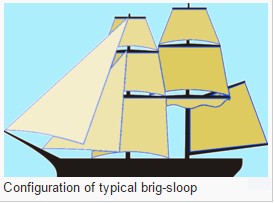
22 July, 1797 -
Tisiphone (left) and
Rambler captured the French privateer
Prospére on the Dogger Bank (right).
23 October, 1799 -
departed St John's, Newfoundland, with a convoy of 12 vessels for Lisbon, but parted from them in a gale off the Grand Bank, and had
to throw her guns overboard.
9 November, 1799 - arrived from Newfoundland with Admiral Weldegrave (left)and the
Agincourt.
28 May, 1800 -
Portsmouth, departed for
Guernsey.
4 June, 1800 - Portsmouth, arrived the Restitution brig, laden with wine, prize to the Rambler.
9
June, 1800 - Portsmouth, arrived with the Harpy, and six transports under their convoy, from Jersey, with Russian troops.
8 July, 1800 -
Portsmouth, departed with a convoy for the Downs (right).
1 August, 1800 - Portsmouth, departed on a cruise.
29 August, 1800 - Portsmouth,
arrived from a cruise, totally dismasted in a gale off the
Race of Alderney, where she parted with the
Fly, and a French
privateer,
which they captured on the coast.
30 August, 1800 - "Hairy Mild Man" of prodigious strength reported to have been a prisoner
on the Rambler in London newspaper.
Sources:
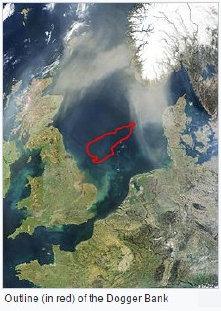
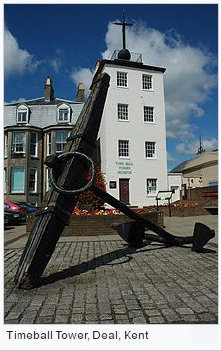
The Great YO-HO!, 1801
Bath Chronicle and Weekly Gazette (England), 2 & 9 April, 1801
The above advertisement is the only additional information about the supposed "large, Hairy Wild Man" (now called "The Great YO-HO!")
and only published in the town that was exhibiting this attraction. Given
the advert’s sensational yet ambiguous claim along with
the fact that the
Rambler was not a South-Sea Whaler and did not travel to/from Africa there is no reason to expect that the
mystery creature is anything but a
humbug. It's a good story, though...
Yet, who would have done so and why?
The original "Hairy
Wild Man" article was written the same day the Rambler limped back into Portsmouth having sustaining gale damage during a successful
raid near the French coast. While the exact details are most likely lost to the sands of time, perhaps someone suggested that the
damage looked like a large Wild Man had gone bezerk on board. Perhaps adding that to the sight of large, dishevelled French prisoner being
lead away in chains and such a sensational story was simply aching to be told. Sure enough, some motivated
wag presented just such a story to some eager newspaper editor and a minor sensation was created leading it to be reported around
the country and landing in America exactly as written--creating, undoubtedly, even more talk and excitment. But then what?
The
two articles refer to the same ship but the details they convey are largely at odds as is the style and manner in which they
were composed which implies different authors--and not necessarily connected. What may have started out as lark and a good story that
created a bit of a stir for free by one person was later revived by some enterprising soul willing to capitalize on
and update the original story via a paid advert advert in the appropriate newspaper. Museums, zoos, circuses, and carnivals are
all in their developmental stages in 1801 but the lay public were already well aware of their predecessor.
Travelling
menageries, which displayed natural curiosities and sideshow attractions, were on the rise in 1801—their popularity among ordinary
folk fuelled by the exotic possibilities of far-away colonial lands. These were a mix of strange facts, fantasy, and fun. The "Great
YO-HO!" appeared some 7 months after the original travellers' tale about the "Hairy Wild Man"--plenty of time for some enterprising
showman to temporarily acquire some rare creature, find a willing but appropriately deformed accomplice, to manufacture a costume,
or to rework the existing lore in order to suit what is already on show.
Is such an scenario unlikely or outlandish? Not so.
A broadside published in 1789 and entitled "A Description of a wonderful large wild man, or monstrous giant, brought from Botany-Bay"
(left) contains a long narrative about the capture of the giant, by the crew of the Ship Rover is printed beneath the two woodcuts.
The text says the Rover landed at Plymouth, 29 November 1789 but, of course, there is no record of such a ship visiting Australia
at that time.
Another version of the broadside is held by the Dixson Collection, State Library of NSW. It only has one woodcut but
the text is largely the same. However this text says the Rover arrived in Plymouth on 24 April 1790.
An even earlier example is an
unillustrated broadside from Scotland in 1701 states:
These broadsides seem to follow a pattern similar
to the "Hairy Wild Man" advert...
So, then, what was on display in the Bath Auction Room in early April, 1801? Who can say? I know
I would happily part with sixpence to satisfy my curiosity especially it was some delightful humbug the likes of which
I couldn't even imagine...
It is instantly apparent that the Rambler was based around Portsmouth in the English Channel and was definitely not returning
from Africa in 1800.
28.01.2017

Reports of the
Wild-/Hairy-Man

Yowie / Bigfoot

Home
Humbugging, or raising the Devil, 1800. Rowlandson’s humbugging depicts the public as a credulous simpleton being distracted by a display of “the miraculous,” the better to have his pockets picked.


More from Yowie-O :
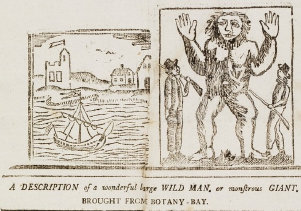
The monstrous-giant : Being an account of a most strange and wonderfull wild-man; above 16 foot high, that was taken by Captain Goodman, near Madagascar with the manner how he was taken and brought to Harwich, in a ship called the Tempest; with other remarkable particulars relating to this prodigious and monstrus giant...


Another Hairy Wild Man from Botany Bay (c.1802)
